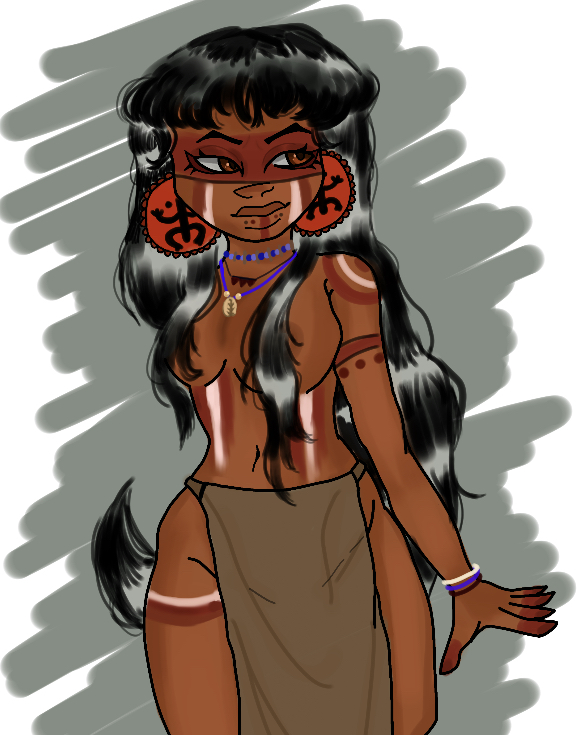As a Latinx student attending North Springs, anything related to my culture is something very dear to my heart and I love learning more and more every day, because unfortunately I was born a “No Sabo” kid, a child who can barely speak their native tongue. I wasn’t raised around that side of my family enough to pick up the history or apparently the language, but, I’ve had the privilege of getting wacked by a chancleta. Since the start of this year, I’ve made it my mission to inform myself and other people of my culture more.
In 1493, Christopher Columbus seized the island for Spain, naming it San Juan Bautista. Years later, fellow Spanish explorer Juan de Ponce Leon evolved the Spanish gold port into the first European settlement and renamed Puerto Rico or “rich port.” This settlement grew, chasing natives into the mountains. These settlements eventually started growing produce such as tobacco, sugar cane, and coffee. Subsequently, the races mixed over a long period of time, creating Puerto Ricans.
Many of Puerto Rican dishes derive from slaves that lived on the plantations. Many of the bases for these iconic dishes are banana-like platanos, maduros, amarillos (as my dad calls them), or plantains. These bitter-sweet banana look-alikes are a Puerto Rican staple and very versatile. They can be mashed, cut into bite size pieces, boiled/steamed, fried, or baked to become a delicious, sweet, salty, or sometimes savory meal. Examples of these are pasteles, fried plantains, tostones, mofongo, and alcapurrias. Some more ambrosial and delectable Puerto Rican plates are baccalao, a salt dried cod stew. While it is very salty and distasteful to some, it is a very nostalgic dish for me. I remember eating this with my family during the holidays and complaining to my papa that my grandma made it with too much salt. Another very delicious snack often mistaken for pierogies, are empanadas (fried turnover consisting of pastry and filling, most likely meat of some kind). I like to make these anytime I miss my country because they’re so easy and delicious!
A lot of sites in Puerto Rico are very scenic and historical, like Castillo San Felipe del Morron. Old San Juan was founded in 1521 by Spanish settlers. During this time La Fortaleza was built. The Fortress was built as a mansion for the governor at the time. Due to Puerto Rico still being in the early stages of its colonization and development, there where many land invasions from countries like Great Britain. To prevent their land from being stolen, they built their second elevation, El Morro. Castillo San Felipe del Morron first served as a promontory with a cannon and evolved into a multi-level defense fortress against coastal invasions or assails. This site eventually became a military installation for the First and Second World War. Now, it stands as a relic on the borders of Old San Juan as a reminder of how powerful our country is. Fortunately, I’ve been able to visit Old San Juan (at the expense of my legs and sunburned face). The only way I could describe it is like a movie. The streets were all cobblestone, every small casita was painted varieties of bright, bold hues and the alleys were littered with shops and people all enjoying the blazing sun.
Now, I know a handful about my culture and I could ramble all day about it all day, but I wanted to know more about other Puerto rican experiences! I want to see other points of views and opinions, so I interviewed a few Puerto Rican teachers and students to get an insight into some common questions about our communities. Granted, while trying to find fellow boricuas in the school, it seemed they’re shy because I couldn’t find many. But here are the answers from the ones I did find.
What are some foods your abuelita (grandmother) made that are your absolute favorites?:
Ms. Flores, Boricua North Springs High School Spanish teacher: Some of my favorites? Pasteles y arroz con gandules!” (rice and pigeon peas pasteles)
Jordan Blake, NSHS student: Empanadas de pollo (chicken).
What is your favorite thing about being Puerto Rican?
Ms. Flores: My favorite thing about our community is the suavecito and the difference we have from other Latin communities like Dominicans, Cubans, etc.
Jordan Blake: I really like how crazy and loud we are. I love how we keep the party going!
As you can see, Puerto Ricans are very diverse people and I’m glad I could share some of that history and culture with you readers and give you a first hand look into our culture.
Phoenix Rivera, 14, is a boricua artist that loves cooking, roller skating, singing, and deep talks. She attends North Springs High School and currently is a freshman.




